Wreck Diving off South Carolina's Hammock Coast
South of the crowds and neon attractions at Myrtle Beach is a pristine peninsula where four rivers converge and flow into the Atlantic Ocean. Known as the Hammock Coast, this strip of land is home to eclectic beach communities and some of the best diving in the Southeast.
Noted for its distinct low-country charm, the area has historic and picturesque town centers situated along the waterfront, nature preserves and state parks teeming with wildlife, and top-notch restaurants famous for fresh seafood. Its coastline is littered with a variety of shipwrecks, artificial-reef systems and an abundance of fish. Within about a 50-mile radius, there are more than 20 dive sites. Fall is an ideal time to go, as the summer crowds are gone and water temperatures average in the mid-70s.
Murrells Inlet
The Hammock Coast is made up of five communities dotting a 20-mile stretch of coastline, with the sleepy fishing village of Murrells Inlet at the northernmost section. Here, along the riverbanks, you’ll see remnants of rice plantations and slave cabins partially hidden behind towering, moss-laden oaks. Murrells Inlet also has a public boat landing that’s a convenient place to start your adventure.
Not far from the coastline is a series of inshore ledges and limestone rock outcroppings. A perfect area for the novice to explore, these natural features are teeming with grouper, snapper, loggerhead turtles and the occasional stingray. There are also a couple of wrecks in the vicinity, including a 90-foot tugboat with a swim-through that’s popular with barracuda and spadefish, as well as the Bruce Rush, a 65-foot fishing boat, where you can sit in the wheelhouse and lookout over the ship. Both wrecks are in about 40 feet of water.
Farther out to sea in about 80 feet of water is what’s thought to be the Civil War-era Governor. Popular among treasure hunters, the ship is a trove of artifacts from the 1860s, with plates, buttons and bottles, scattered over a debris field.
Directly south of the Civil War wreck, about 25 miles from Murrells Inlet, is the BP-25 site, part of the South Carolina Department of Natural Resource’s artificial-reef program. Beneath about 90 feet of water is a 280-foot Panamian tanker covered in coral, and nearly two dozen New York City subway cars — five of which are accessible to divers — that are home to grouper and loggerhead sea turtles.
Continuing south, you’ll find the Twin Cities dive site, where the Hebe, a Dutch freighter, and the St. Cathan, a British sub chasher, crashed in blackout conditions during World War II. Both ships lie under about 100 feet of water, less than a half-mile apart, loaded with fish. Divers are still discovering artifacts around the Twin Cities site, such as bottles, silverware and ceramic items.
Georgetown
Several other great sites can be accessed from the Georgetown public boat landing, a 30-minute drive from Murrells Inlet along US-17. Founded in 1729, Georgetown is South Carolina’s third-oldest city.
About 25 miles of Georgetown is the City of Richmond, a five-deck passenger ship that went down in a storm while being towed to the Virgin Islands to be converted into a casino. Sitting in about 60 feet of water, the ship’s hull and boilers are intact; because of its proximity to the inlet and surrounding hard bottom, it’s teeming with marine life, including the occasional tiger and sand shark.
Just a few miles southeast of the City of Richmond is the USS Vermillion, by far the biggest draw of the Hammock Coast. Now part of the state’s artificial-reef program, the ship transported troops during WWII. Too expansive to be seen in one dive, it’s worth a return trip to fully explore this 470-foot mammoth, which rests between two hard-bottom ledges in about 140 feet of water filled with marine life from lobsters to stingrays.
Itinerary
Day 1:

From Columbia, it’s about a three-hour drive to Murrells Inlet. Check in at boutique-style Inlet Sports Lodge (starting at $119 a night, prices vary by season). Grab a bite at the resort’s Bliss for crab-crusted grouper and seared scallops or stuffed buffalo meatloaf.
Day 2: embark from Murrells Inlet public boat landing at 8 a.m. First, explore inshore ledges of limestone out- cropping. Next, head to deeper waters, where there are a number of wrecks, including a 280-foot Panamian tanker covered in coral, and five New York City subway cars. Back on shore, refuel at either Bubba’s Love Shak or Drunken Jack’s.
Day 3: Drive 20 miles south to Georgetown. head to either City of Richmond or USS Vermillion. Afterward, grab a bite at the Rice Paddy or the River Room, which offers locally caught seafood.

End the day with a stroll past antebellum homes and towering oak trees in the historic downtown.
When to go: Fall season runs September through november; winter, December through April; summer, May through August. The calmest seas and best visibility occur during fall.
NEED TO KNOW:
Dive conditions: Water temperatures average in the mid-70s during fall and from the low to mid-80s during summer. Visibility ranges from 25 to 150 feet during fall, and can reach as much as 200 feet as you get farther offshore into Gulf Stream waters. Summer visibility ranges from 25 to 100 feet.

Operators: Jonathan and Jennifer Jones-Poore opened Express Watersports in Murrells Inlet in 1997 (express watersports.com). The company offers quarter-, half-, three-quarter and full-day trips on its 46-foot Newton dive boat.
Price tag: Average charter prices range from $75 to $135, depending on the dive site; gear rental is an additional $40 for a complete package.
Looking for more info on diving in South Carolina? Check out these other great operators:
Olympus Diving
Discovery Diving
More Local USA Dive Sites:
SoCal's Best Beach Dives | Florida Panhandle Shipwreck Trail | The Wrecks of Munising
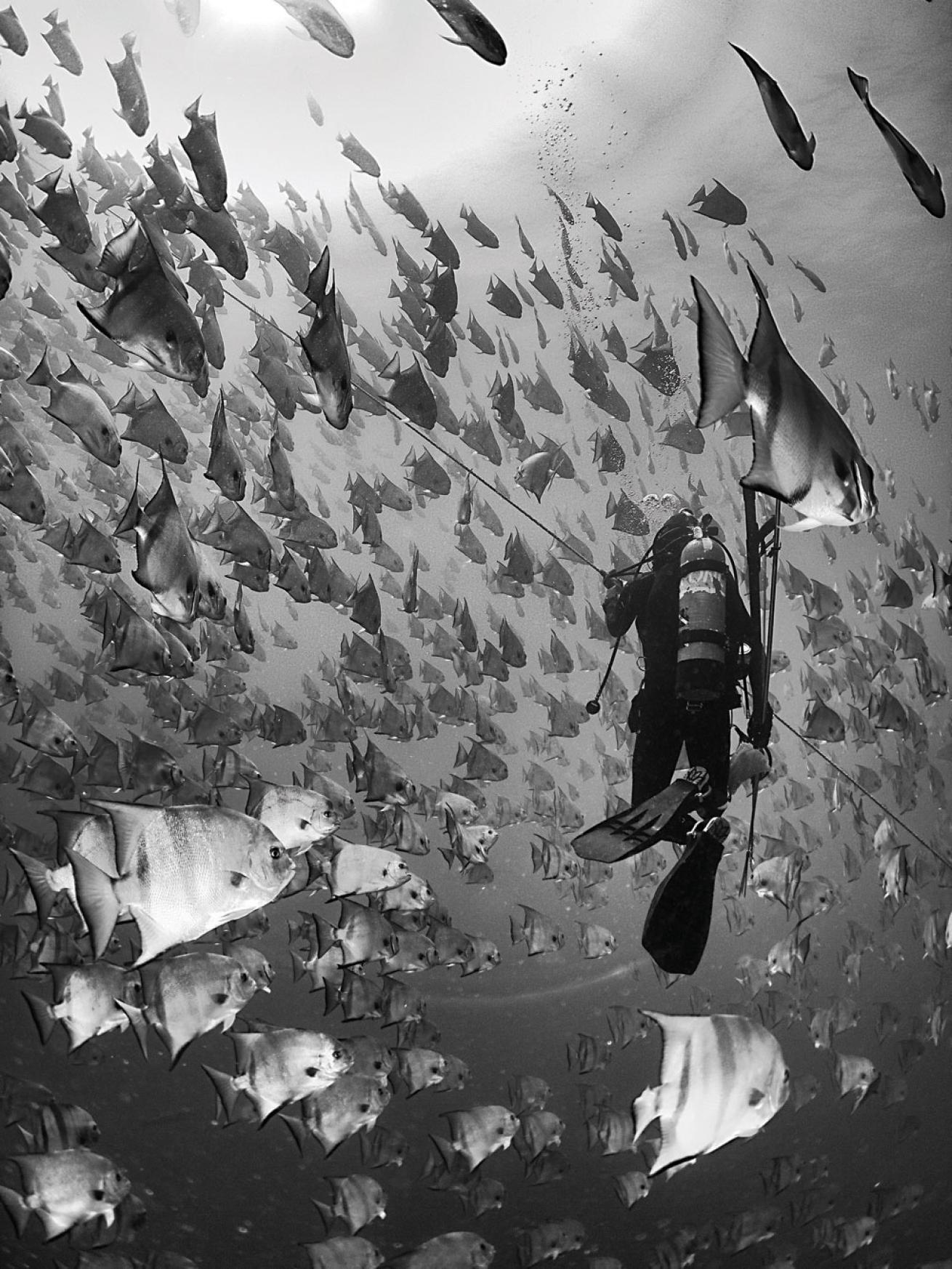
Andrew RaakAtlantic spadefish (Chaetodipterus faber) envelop a diver. These fish are most active during summer months.
South of the crowds and neon attractions at Myrtle Beach is a pristine peninsula where four rivers converge and flow into the Atlantic Ocean. Known as the Hammock Coast, this strip of land is home to eclectic beach communities and some of the best diving in the Southeast.
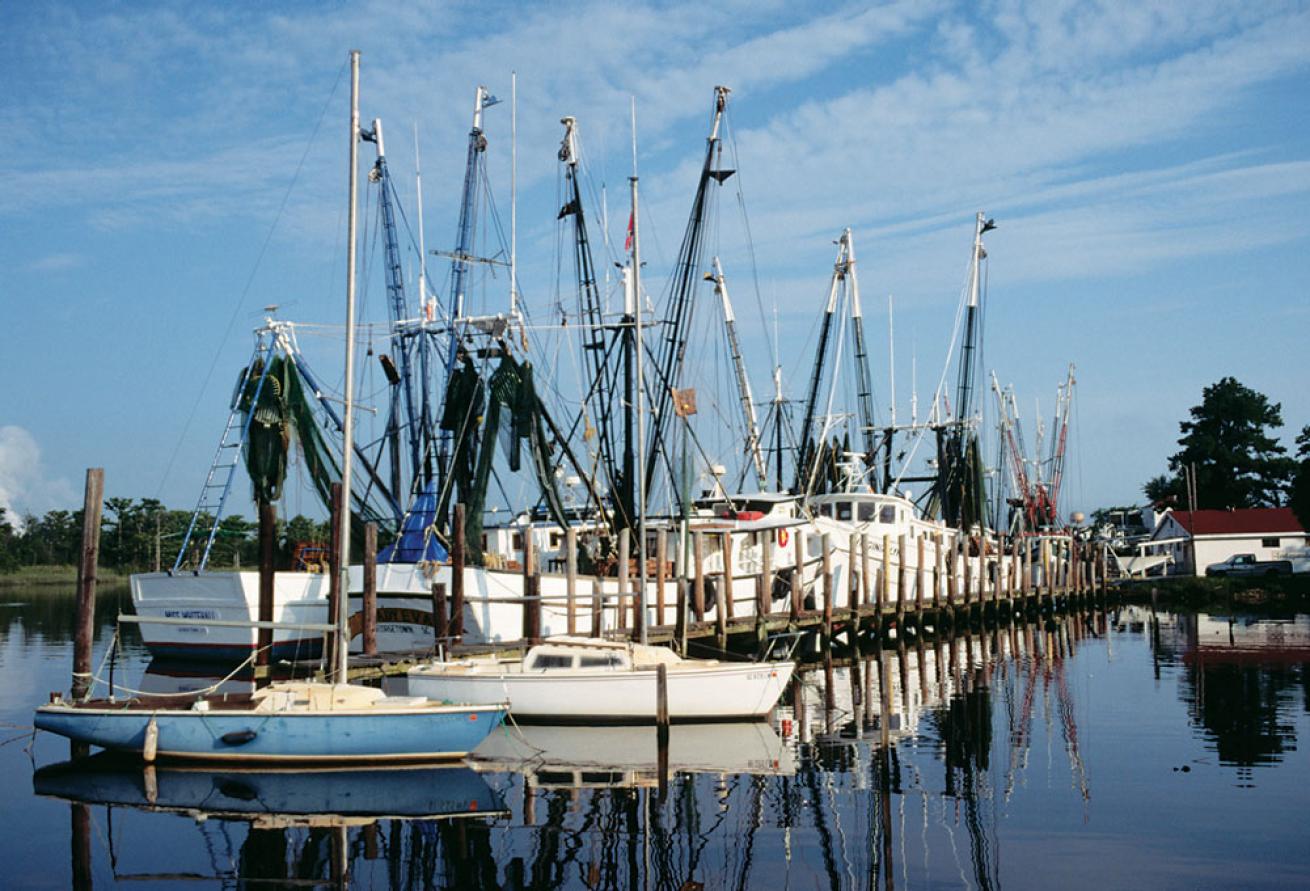
Richard Bickel/CorbisThe historic seaport city of Georgetown, South Carolina's third oldest city, has historic and picturesque town centers situated along the waterfront, nature preserves and state parks teeming with wildlife, and top-notch restaurants famous for fresh seafood.
Noted for its distinct low-country charm, the area has historic and picturesque town centers situated along the waterfront, nature preserves and state parks teeming with wildlife, and top-notch restaurants famous for fresh seafood. Its coastline is littered with a variety of shipwrecks, artificial-reef systems and an abundance of fish. Within about a 50-mile radius, there are more than 20 dive sites. Fall is an ideal time to go, as the summer crowds are gone and water temperatures average in the mid-70s.
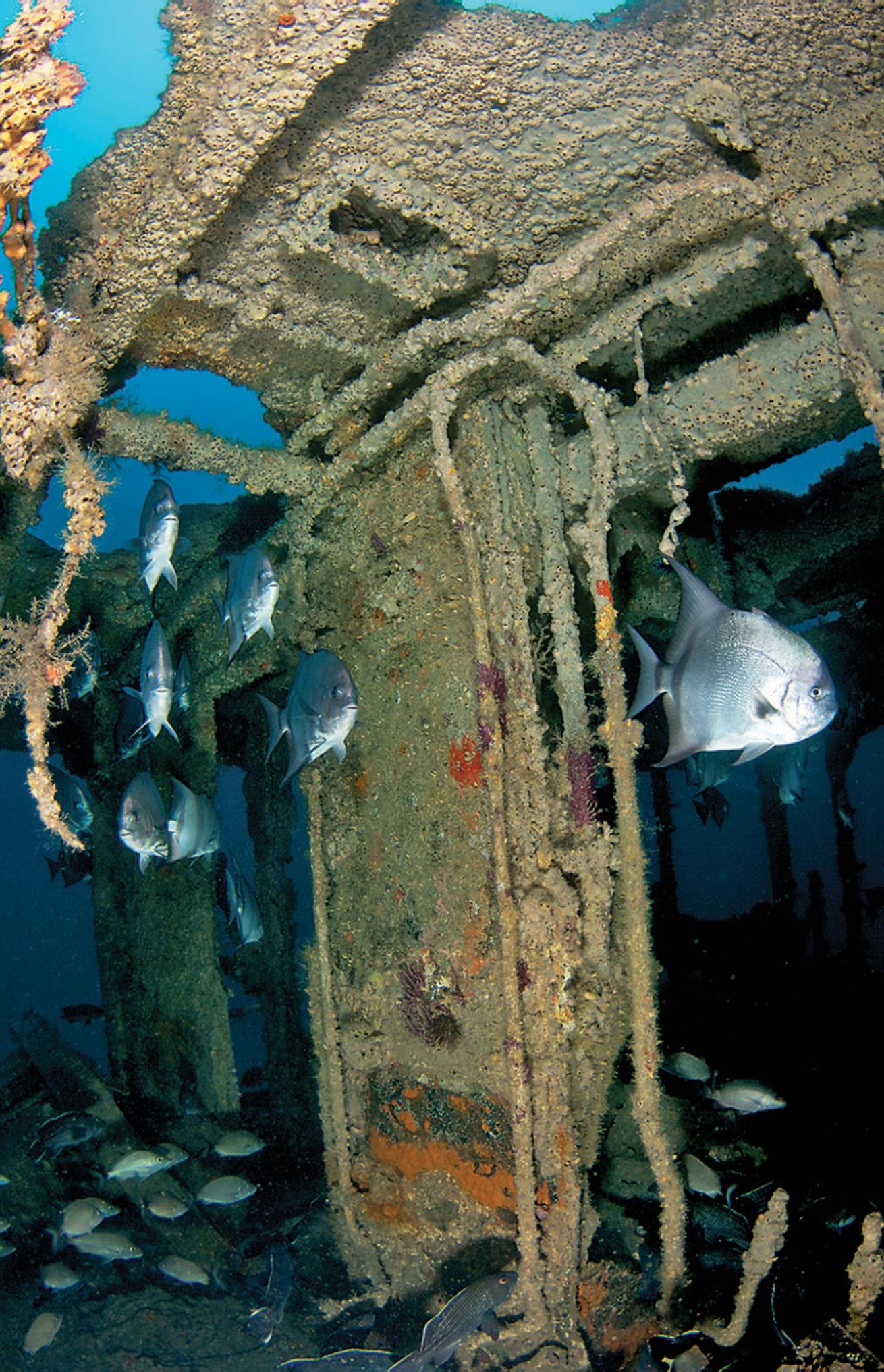
Andrew RaakAtlantic spadefish on the USS Vermillion, a former World War II Liberty ship, a haven for grouper and other tropical fish species. Sand tiger sharks also make guest appearances.__
Murrells Inlet
The Hammock Coast is made up of five communities dotting a 20-mile stretch of coastline, with the sleepy fishing village of Murrells Inlet at the northernmost section. Here, along the riverbanks, you’ll see remnants of rice plantations and slave cabins partially hidden behind towering, moss-laden oaks. Murrells Inlet also has a public boat landing that’s a convenient place to start your adventure.
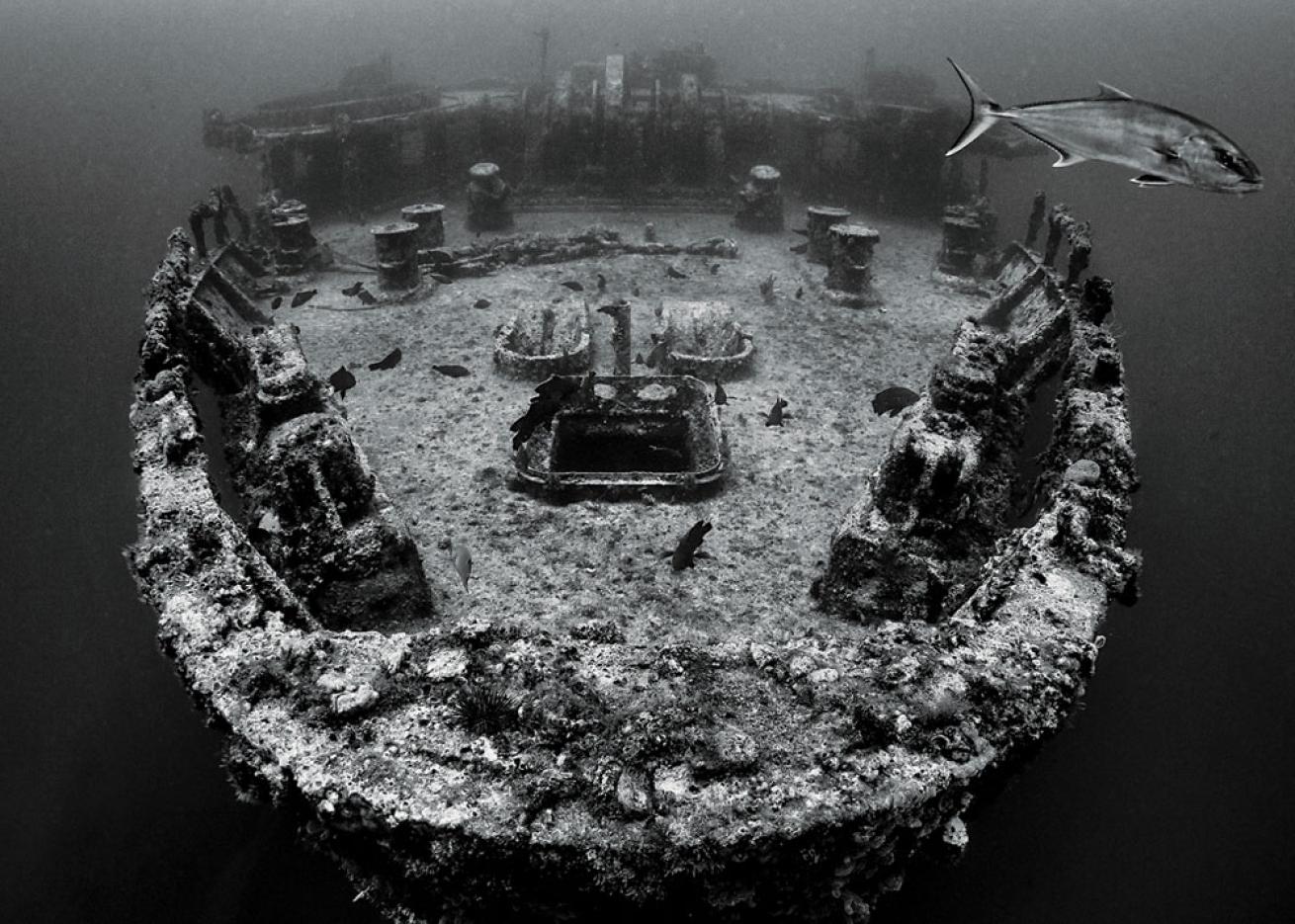
Andrew RaakNow part of the state’s artifcial-reef program, the USS Vermillion transported troops during WWII.
Not far from the coastline is a series of inshore ledges and limestone rock outcroppings. A perfect area for the novice to explore, these natural features are teeming with grouper, snapper, loggerhead turtles and the occasional stingray. There are also a couple of wrecks in the vicinity, including a 90-foot tugboat with a swim-through that’s popular with barracuda and spadefish, as well as the Bruce Rush, a 65-foot fishing boat, where you can sit in the wheelhouse and lookout over the ship. Both wrecks are in about 40 feet of water.
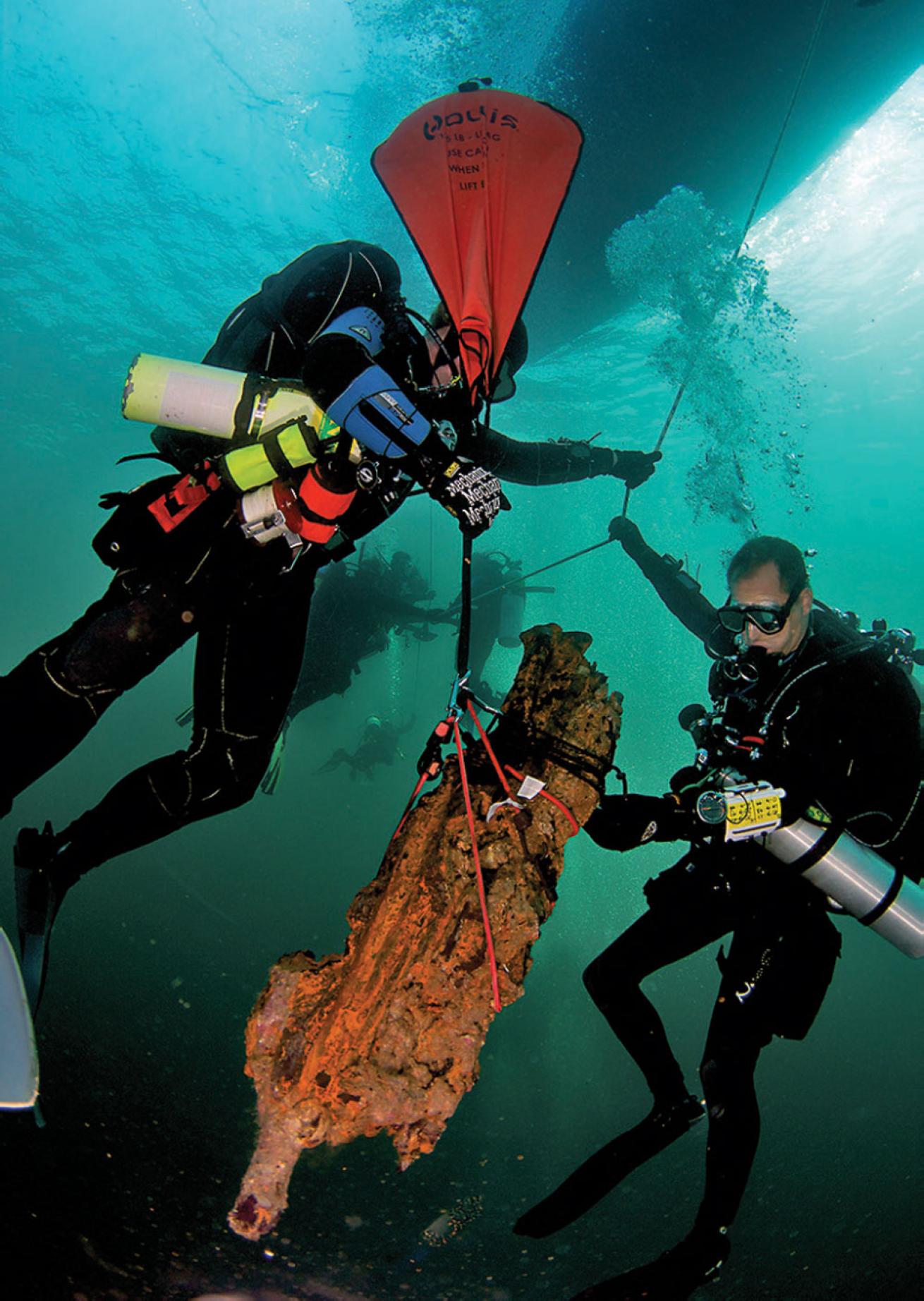
Andrew RaakDivers lift Civil War rifles from the Governor wreck. The_ Governor_ was a Civil War era paddle-wheeler.
Farther out to sea in about 80 feet of water is what’s thought to be the Civil War-era Governor. Popular among treasure hunters, the ship is a trove of artifacts from the 1860s, with plates, buttons and bottles, scattered over a debris field.
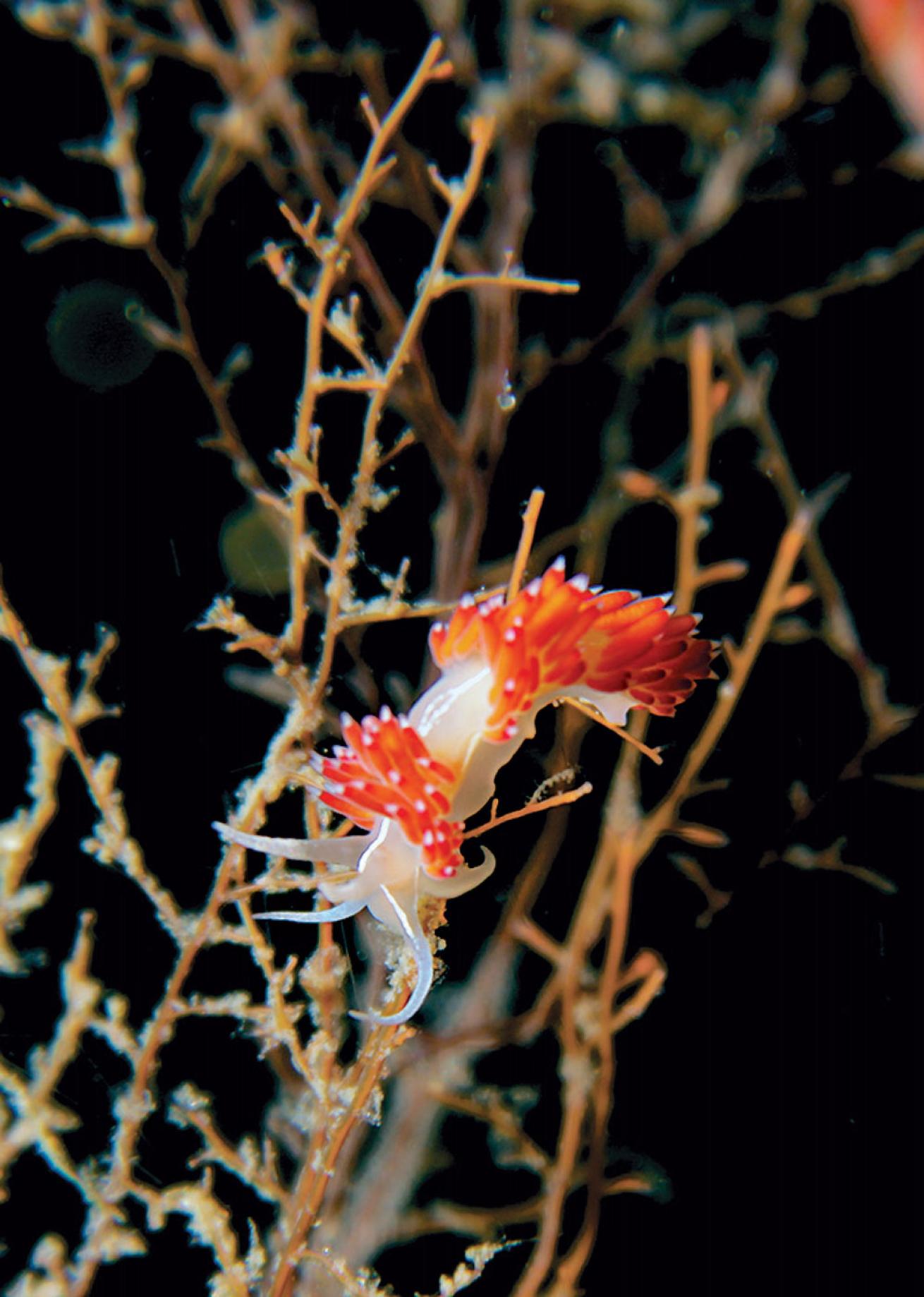
Andrew RaakA pair of colorful western dondice (Dondice occidentalis), which is a species of sea slug.
Directly south of the Civil War wreck, about 25 miles from Murrells Inlet, is the BP-25 site, part of the South Carolina Department of Natural Resource’s artificial-reef program. Beneath about 90 feet of water is a 280-foot Panamian tanker covered in coral, and nearly two dozen New York City subway cars — five of which are accessible to divers — that are home to grouper and loggerhead sea turtles.
Continuing south, you’ll find the Twin Cities dive site, where the Hebe, a Dutch freighter, and the St. Cathan, a British sub chasher, crashed in blackout conditions during World War II. Both ships lie under about 100 feet of water, less than a half-mile apart, loaded with fish. Divers are still discovering artifacts around the Twin Cities site, such as bottles, silverware and ceramic items.
Georgetown
Several other great sites can be accessed from the Georgetown public boat landing, a 30-minute drive from Murrells Inlet along US-17. Founded in 1729, Georgetown is South Carolina’s third-oldest city.
About 25 miles of Georgetown is the City of Richmond, a five-deck passenger ship that went down in a storm while being towed to the Virgin Islands to be converted into a casino. Sitting in about 60 feet of water, the ship’s hull and boilers are intact; because of its proximity to the inlet and surrounding hard bottom, it’s teeming with marine life, including the occasional tiger and sand shark.
Just a few miles southeast of the City of Richmond is the USS Vermillion, by far the biggest draw of the Hammock Coast. Now part of the state’s artificial-reef program, the ship transported troops during WWII. Too expansive to be seen in one dive, it’s worth a return trip to fully explore this 470-foot mammoth, which rests between two hard-bottom ledges in about 140 feet of water filled with marine life from lobsters to stingrays.
Itinerary
Day 1:
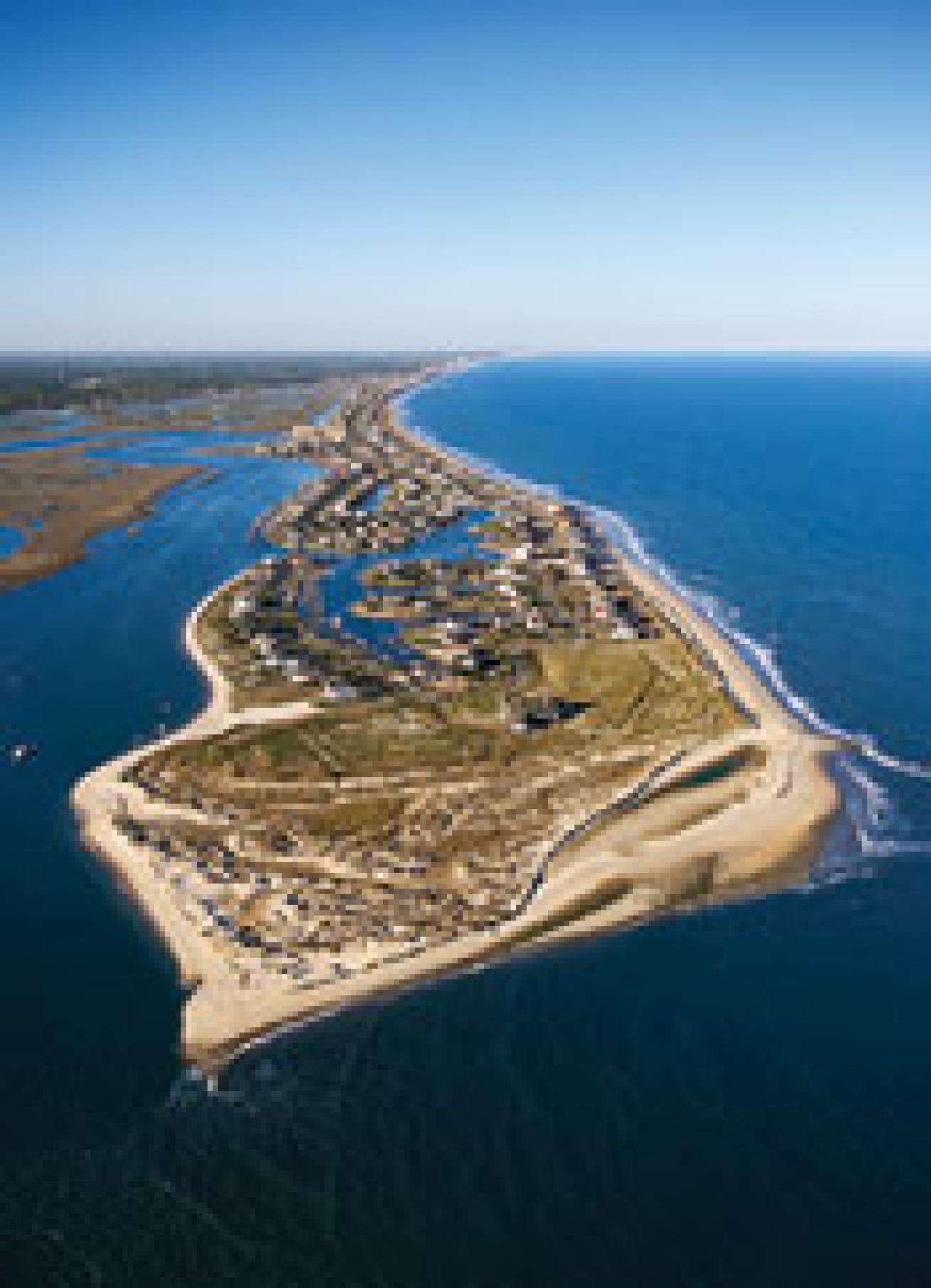
From Columbia, it’s about a three-hour drive to Murrells Inlet. Check in at boutique-style Inlet Sports Lodge (starting at $119 a night, prices vary by season). Grab a bite at the resort’s Bliss for crab-crusted grouper and seared scallops or stuffed buffalo meatloaf.
Day 2: embark from Murrells Inlet public boat landing at 8 a.m. First, explore inshore ledges of limestone out- cropping. Next, head to deeper waters, where there are a number of wrecks, including a 280-foot Panamian tanker covered in coral, and five New York City subway cars. Back on shore, refuel at either Bubba’s Love Shak or Drunken Jack’s.
Day 3: Drive 20 miles south to Georgetown. head to either City of Richmond or USS Vermillion. Afterward, grab a bite at the Rice Paddy or the River Room, which offers locally caught seafood.
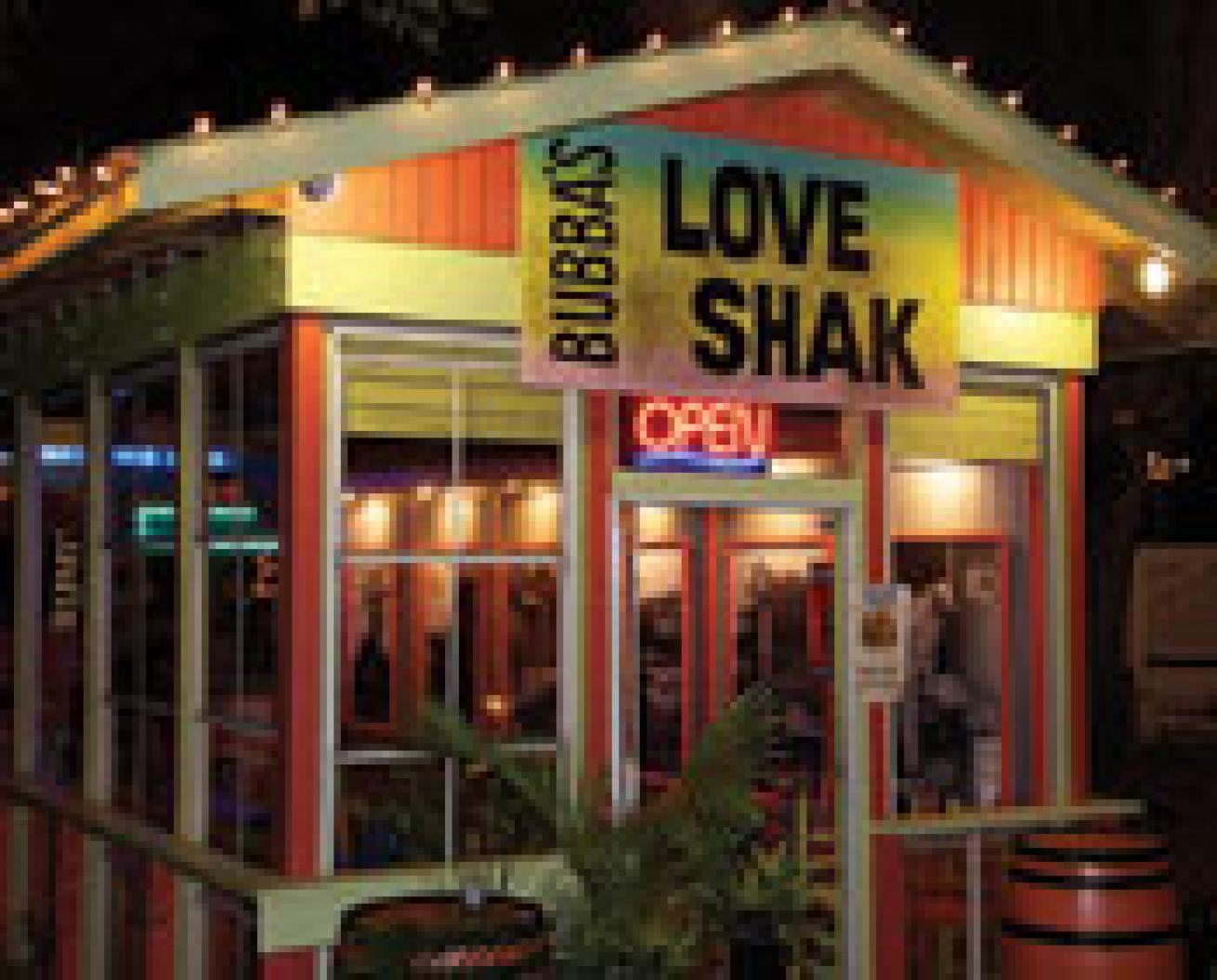
End the day with a stroll past antebellum homes and towering oak trees in the historic downtown.
NEED TO KNOW:
Dive conditions: Water temperatures average in the mid-70s during fall and from the low to mid-80s during summer. Visibility ranges from 25 to 150 feet during fall, and can reach as much as 200 feet as you get farther offshore into Gulf Stream waters. Summer visibility ranges from 25 to 100 feet.
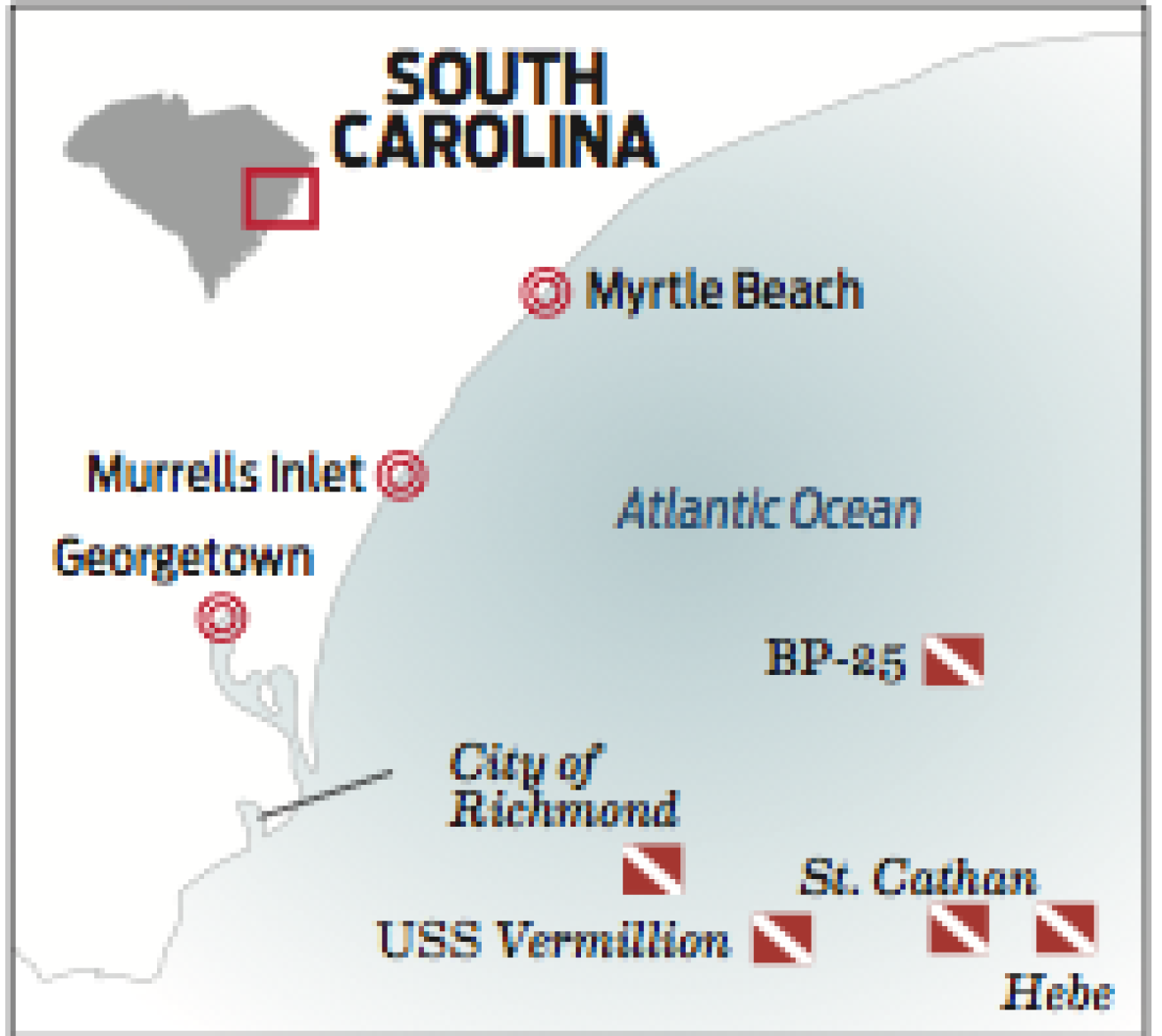
When to go: Fall season runs September through november; winter, December through April; summer, May through August. The calmest seas and best visibility occur during fall.
Operators: Jonathan and Jennifer Jones-Poore opened Express Watersports in Murrells Inlet in 1997 (express watersports.com). The company offers quarter-, half-, three-quarter and full-day trips on its 46-foot Newton dive boat.
Price tag: Average charter prices range from $75 to $135, depending on the dive site; gear rental is an additional $40 for a complete package.
Looking for more info on diving in South Carolina? Check out these other great operators:
Olympus Diving
Discovery Diving
More Local USA Dive Sites:
SoCal's Best Beach Dives | Florida Panhandle Shipwreck Trail | The Wrecks of Munising










